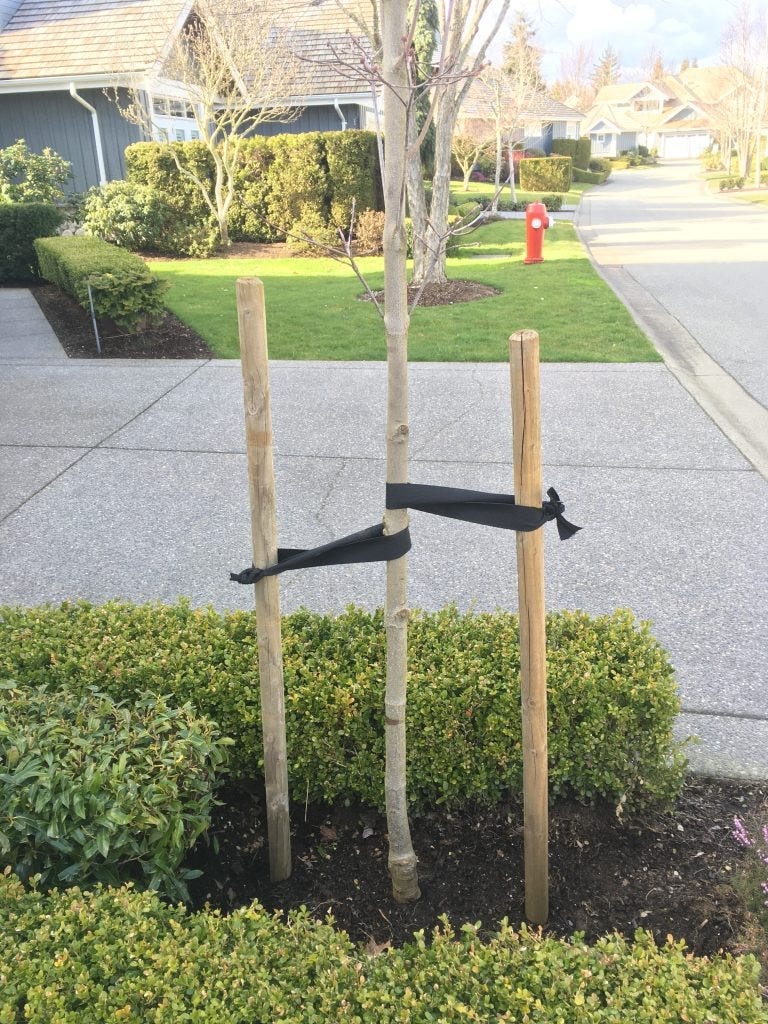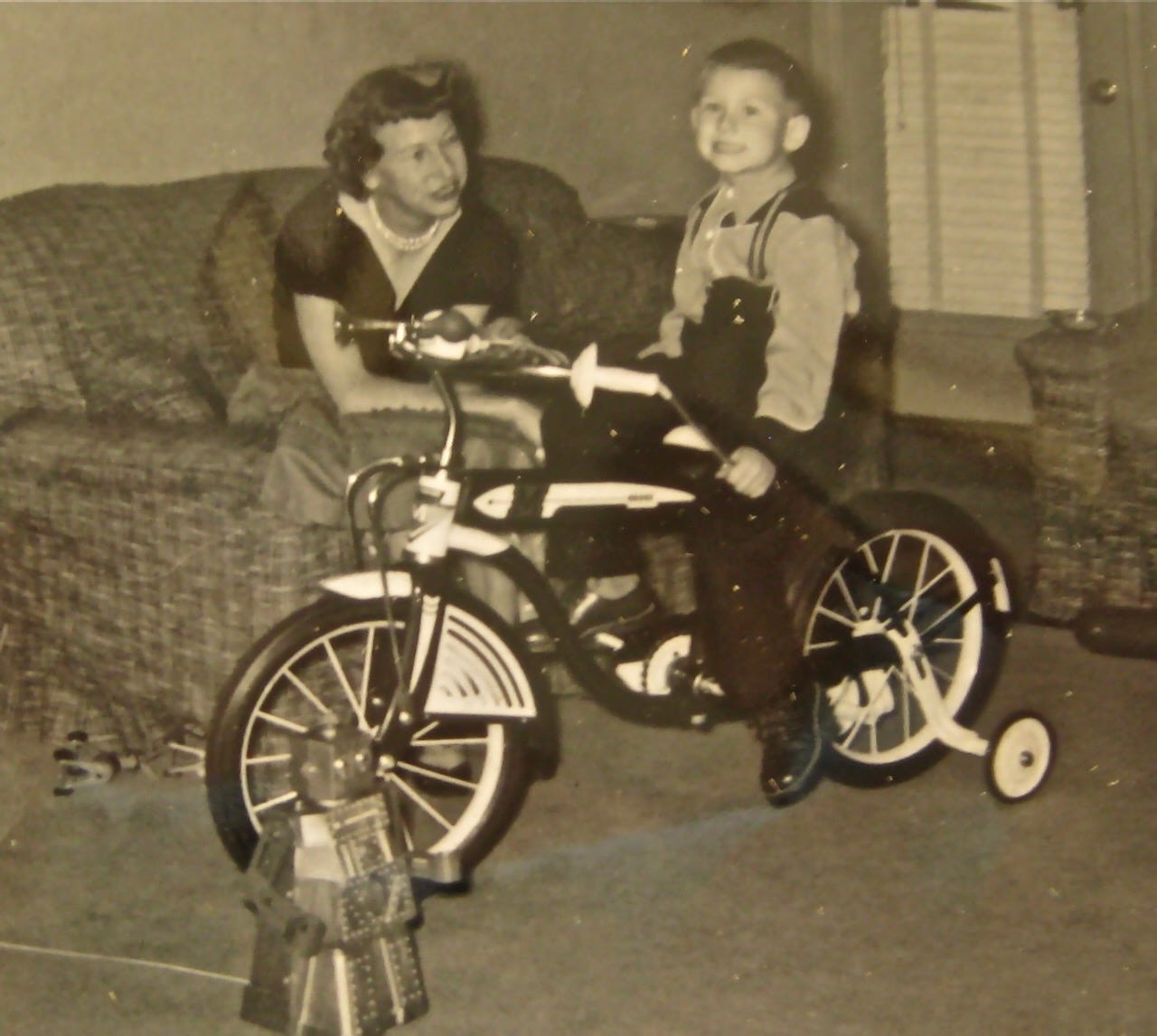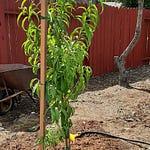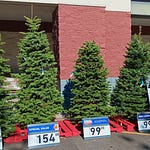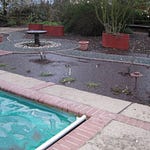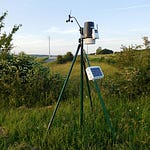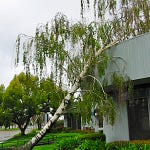Simple instructions from the Placer County (CA) Master Gardeners on proper tree staking:
Q: I just planted a new tree and want to know the best way to stake it.
A: It’s important to know that not all newly planted trees need to be staked. In fact, improper staking can harm rather than help. The more freely a tree can move, the stronger its trunk will become and the more likely it will be to withstand storms.
There are three situations in which staking is necessary: to protect against damage from equipment, vehicles or animals; to anchor trees whose roots cannot support the tree upright in the wind; and to support trunks unable to stand upright by themselves.
Protective stakes only need to be tall enough to be seen and avoided by equipment operators. Three stakes are generally enough and they should not be attached to the tree. Netting or wire fencing can be attached to the stakes to exclude animals.
Anchor stakes should be firmly set in the surrounding soil outside the root ball. Short stakes used for protection can do double duty as anchoring stakes by attaching the lower part of the tree to them with broad, flexible ties. The idea is to restrict root ball movement, while allowing the top of the tree to move in the wind.
Trees trained properly at the nursery should not need support staking. Most reputable tree growers no longer remove lower branches to create top-heavy, “lollipop” trees. They know that leaving these “nurse branches” on the young tree will help it develop a thicker trunk with healthy taper.
To determine if your newly purchased tree requires support staking, remove the stake that came with the tree from the nursery. If the tree stands upright on its own, you should not stake it.
However if the trunk flops over, place two stakes in the ground outside the root ball on opposite sides of the tree so that prevailing winds will blow through the stakes. Starting about 2 feet above the ground, use two fingers, one on either side, to support the trunk. Move your fingers slowly up the trunk until the tree stands upright. Flexible ties that allow movement should go 6 inches above this point. Cut the stakes 2 to 3 inches above the ties so that the trunk and upper branches will not be damaged by blowing into or rubbing on the stakes. Check the ties regularly to make sure they are not constricting the trunk.
Remove stakes and ties as soon as they are no longer needed.
Thanks for reading Beyond Basics: The Garden Basics with Farmer Fred Newsletter! Subscribe for free to receive new posts and support my work.
Thank you for also listening to the Garden Basics with Farmer Fred podcast! It’s available wherever you get your podcasts. Please share it with your garden friends.
Fred Hoffman is also a University of California Cooperative Extension Master Gardener in Sacramento County. And he likes to ride his bike(s).



